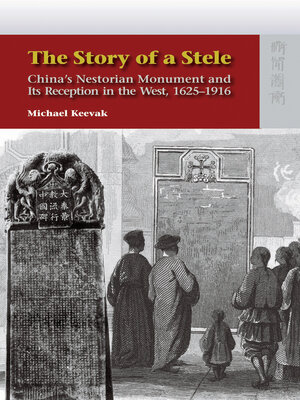The Story of a Stele
ebook ∣ China's Nestorian Monument and Its Reception in the West, 1625–1916
By Michael Keevak

Sign up to save your library
With an OverDrive account, you can save your favorite libraries for at-a-glance information about availability. Find out more about OverDrive accounts.
Find this title in Libby, the library reading app by OverDrive.



Search for a digital library with this title
Title found at these libraries:
| Library Name | Distance |
|---|---|
| Loading... |
Western readers have yet to come to terms with the fact that during much of our history very little was ever "known" about China. There was never any lack of information from missionaries and travelers and traders. But what kind of information was it? What kind of knowledge was obtainable via the lenses of religious intolerance, colonial ambition, or Eurocentrism? Travel accounts, Jesuit letter-books, or embassy narratives can sometimes seem comparatively dispassionate, even ethnographic, but one is repeatedly struck by a remarkable vagueness when it comes to discussions of the foreign, and such discussions become buried in a huge mélange of fact and fiction that is then collected, retold, or reintegrated in innumerable ways. The thesis of this book is that when Westerners discussed the Nestorian monument they were not really talking about China at all. The stone served as a kind of screen onto which they could project their own self-image and this is what they were looking at, not China. The stone came to represent the empire and its history for many Western readers, but only because it was seen as a tiny bit of the West that was already there.This is the first detailed study in English of the Western reception of the monument since its discovery in Xi'an in 1625. It will be essential reading for those interested in East Asian colonialism, in the vagaries of cross-cultural contact between East and West, and in the way in which, from the very beginning of the period of Western presence in China, the empire was viewed as little more than an extension of European prejudices about the superiority of its own cultures, religions, and conceptual paradigms.







